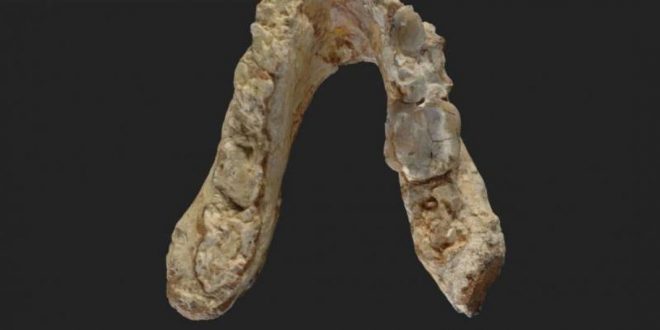Europe, not Africa, might have spawned the first members of the human evolutionary family around 7 million years ago, researchers say.
In a new finding that adds to that conversation, an international team of researchers analyzed two previously found specimens of a hominid species, Graecopithecus freybergi, whose dental fossils were found in Greece and Bulgaria. Using a visualization method called computer tomography, researchers demonstrated that the roots of premolars were widely fused, a trait not seen in apes but common in the human lineage.
“While great apes typically have two or three separate and diverging roots, the roots of Graecopithecus converge and are partially fused — a feature that is characteristic of modern humans, early humans and several pre-humans including Ardipithecus and Australopithecus,” Madelaine Böhme from the University of Tübingen in Germany said in a statement Monday.
The upper premolar was found in Bulgaria and a lower jaw was discovered in Greece. The latter, nicknamed “El Graeco,” shows other root features that suggest it belonged to a pre-human species, making it the first find of a pre-human species outside sub-Saharan Africa.
Additionally, two Graecopithecus fossils have been dated to 7.24 million years ago and 7.175 million years ago, which is several hundred thousand years older than the oldest known potential pre-human candidate — Sahelanthropus from Chad, whose remains are dated to be between six and seven million years old.
What that could mean is that the conventional understanding of the ape-human split that took place in Africa could be wrong. Instead, the split could have happened in the Eastern Mediterranean, and much longer ago than commonly thought.
“The incipient formation of a desert in North Africa more than seven million years ago and the spread of savannahs in Southern Europe may have played a central role in the splitting of the human and chimpanzee lineages,” Böhme said, calling the hypothesis the North Side Story.
Böhme and Nikolai Spassov from the Bulgarian Academy of Sciences headed the team of researchers who published two papers on the subject. Appearing online Monday in journal PLOS ONE, the papers are titled “Potential hominin affinities of Graecopithecus from the Late Miocene of Europe” and “Messinian age and savannah environment of the possible hominin Graecopithecus from Europe.”
The studies refer to pre-humans, species that predate early humans like those belonging to the genus Australopithecus. The pre-human species, such as Graecopithecus, split from the common ancestor we had with chimpanzees, and later evolved into Australopithecus. The genus of modern humans, Homo, arrived on the scene much later, the earliest specimen dated to about 2.8 million years ago.
Many early human fossils, as well as some of the oldest fossils of modern humans, have been found in Africa, leading to the common understanding of most human evolution taking place in that continent, with large-scale movement to different parts of the world following later.
Agencies/Canadajournal
 Canada Journal – News of the World Articles and videos to bring you the biggest Canadian news stories from across the country every day
Canada Journal – News of the World Articles and videos to bring you the biggest Canadian news stories from across the country every day



